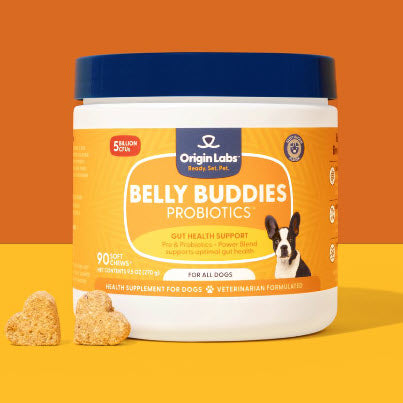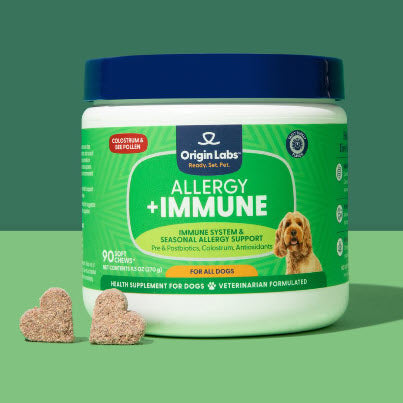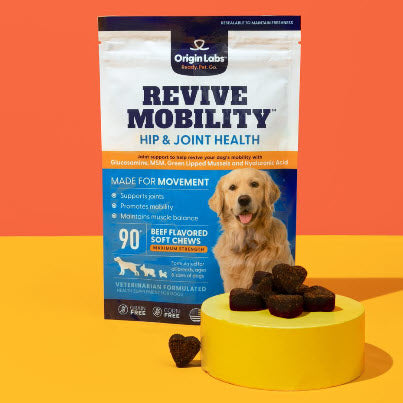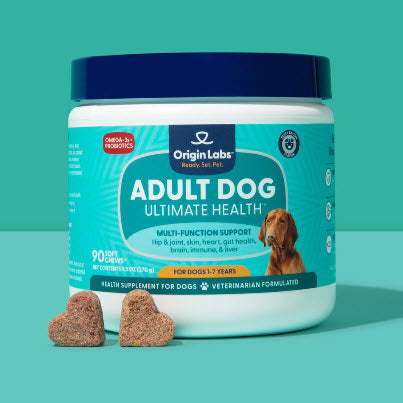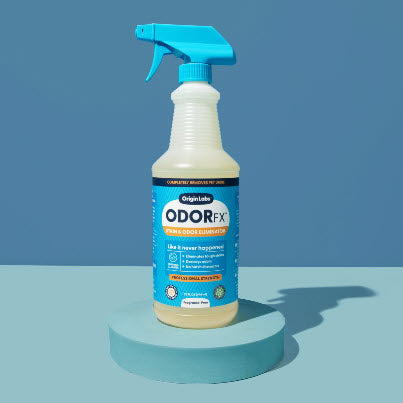Introduction
Caramel, a popular sweet treat made from heated sugar, often finds its way into various human foods and desserts. Dogs, with their keen sense of smell, can find caramel enticing due to its rich aroma and sweet taste. However, can dogs eat caramel? The short answer is that while a small amount of caramel may not be immediately toxic to dogs, it is generally not safe for them to consume.
Why Dogs Should Avoid Caramel
Caramel contains high levels of sugar and potentially harmful ingredients like additives or flavorings. Consuming these can lead to health issues in dogs such as:
- Obesity
- Dental problems
- Pancreatitis
It's important for dog owners to understand the potential risks associated with feeding their pets certain foods, including treats like caramel. This knowledge can help prevent unnecessary health problems and ensure that dogs receive a balanced diet.
Importance of Understanding Dog-Safe Foods
A dog's diet significantly impacts its overall health and well-being. Feeding pets nutritionally imbalanced or harmful foods can have long-term detrimental effects.
To support their furry friends' health, pet owners should consider exploring alternative options that cater to different life stages. For instance, adult dog food options provide tailored health support for adult dogs, while senior dog supplements offer specialized support for older canines.
This article delves into:
- The nutritional needs of dogs
- The risks associated with feeding them caramel
- Safer alternatives to caramel
- How to educate others about harmful foods for dogs
By understanding what foods are safe for dogs, pet owners can make informed choices that promote their pets' well-being.
The Nutritional Needs of Dogs
1. Proteins
Proteins are essential for muscle development and repair in dogs. They also play a vital role in producing enzymes and hormones. High-quality sources of proteins include:
- Meat
- Fish
- Eggs
- Some plant-based options like lentils
2. Fats
Fats offer a concentrated source of energy for dogs and are important for maintaining healthy skin and coat. They also assist in the absorption of fat-soluble vitamins (A, D, E, K). Omega-3 and Omega-6 fatty acids found in fish oil and flaxseed are particularly beneficial for dogs.
3. Carbohydrates
While not strictly necessary, carbohydrates can provide a valuable energy source for dogs. Whole grains, vegetables, and fruits are excellent carbohydrate choices that also offer fiber for digestive health.
4. Vitamins
Vitamins have specific functions in a dog's body. Here are some examples:
- Vitamin A: Supports vision and immune function.
- Vitamin D: Crucial for bone health.
- Vitamin E: Acts as an antioxidant.
- B Vitamins: Aid in metabolism and energy production.
5. Minerals
Essential minerals like calcium, phosphorus, potassium, and magnesium play important roles in bone health, muscle function, and overall cellular processes in dogs.
Feeding dogs foods that lack these essential nutrients or are nutritionally imbalanced can lead to various health issues:
- Obesity: High-fat diets without adequate exercise can result in obesity, leading to joint problems and diabetes.
- Nutrient Deficiencies: Lack of specific vitamins or minerals can cause conditions such as rickets (calcium deficiency) or weakened immunity (vitamin deficiency).
- Digestive Issues: Inadequate fiber intake from poor carbohydrate sources can lead to digestive problems like constipation or diarrhea.
Tailoring the Diet to Your Dog's Needs
Ensuring your dog receives a well-rounded diet helps prevent many health issues and promotes overall well-being. Consulting with a veterinarian can provide personalized dietary advice tailored to your dog’s age, activity level, and any existing health conditions.
Can Dogs Eat Caramel?
Caramel, with its sweet and rich flavor, is undeniably enticing not just to humans but also to dogs. However, this sugary treat poses significant risks when it comes to our canine companions.
Risks of Dogs Eating Caramel
High Sugar Content: Caramel is primarily made from sugar, which can lead to a range of health issues in dogs such as obesity, dental problems, and diabetes. Consuming excessive sugar can cause sudden spikes in blood glucose levels, which can be particularly dangerous for dogs with pre-existing conditions.
Additives and Flavorings: Many caramel products contain additives or flavorings that are harmful to dogs. For example, xylitol, an artificial sweetener often found in sugar-free candies and gums, is extremely toxic to dogs and can cause a rapid release of insulin, leading to hypoglycemia (low blood sugar).
Empty Calories: Unlike nutrient-dense foods, caramel provides no essential nutrients that contribute to a dog's health. Regular consumption of such empty calories can result in nutritional imbalances.
Potential Toxicity: While caramel itself isn't classified as immediately toxic like chocolate or grapes, the ingredients used in its preparation can vary. Some caramels may include ingredients like chocolate coatings or nuts, adding layers of risk for toxicity.
What If My Dog Ate a Small Amount of Caramel?
Risk Assessment
A small lick or accidental ingestion of caramel might not cause immediate harm to most dogs. The amount consumed plays a crucial role in determining the level of risk involved.
- Tiny Lick: A minor exposure such as a tiny lick is generally not something to panic about. The dog's body can typically handle small amounts without severe repercussions.
- Accidental Ingestion: If your dog accidentally ingests a small piece of caramel candy or a spoonful of caramel sauce, it's essential to assess the situation calmly.
Monitoring Your Dog
After realizing your dog has ingested caramel:
Observe Immediate Reactions:
- Digestive Issues: Look out for signs like vomiting or diarrhea.
- Lethargy: Unusual tiredness or lack of energy could be an indicator.
- Restlessness: Excessive pacing or inability to settle down might suggest discomfort.
Check for Unusual Symptoms:
- Excessive Thirst: Increased water intake could be due to high sugar levels.
- Tremors or Shaking: These could indicate more serious reactions such as hypoglycemia.
- Changes in Behavior: Any noticeable shift from your dog's usual behavior warrants attention.
When to Seek Veterinary Attention:
- If symptoms persist beyond 24 hours.
- If you observe severe reactions like continuous vomiting, seizures, or unresponsiveness.
- It's always better to err on the side of caution and consult your veterinarian if unsure.
My Dog Ate a Large Quantity of Caramel - What Now?
Recognizing Signs of Caramel Poisoning
Consuming large quantities of caramel significantly increases the risk of toxicity and other health issues:
- Vomiting and Diarrhea: Persistent digestive issues are common signs.
- Excessive Drooling: This might indicate nausea or gastrointestinal discomfort.
- Rapid Breathing or Panting: Could be signs of distress or pain.
- Seizures: In extreme cases where toxic additives are involved.
Immediate Veterinary Care
Prompt action is crucial if your dog has ingested a large amount:
- Do Not Induce Vomiting Without Professional Guidance: Inducing vomiting without proper guidance could lead to aspiration pneumonia if the vomit enters the lungs.
- Contact Your Vet Immediately: Provide them with details about what and how much was consumed. Follow their advice closely.
- Emergency Clinic Visit: If instructed by your vet, take your dog to an emergency clinic for immediate treatment.
Understanding these risks allows pet owners to make informed decisions about their dog's diet.
My Dog Ate a Large Quantity of Caramel - What Now?
It's important to know when your dog has eaten a lot of caramel. Caramel has a high amount of sugar and other substances that can be harmful to dogs in large quantities. Here's what you should do:
Signs of Caramel Poisoning in Dogs:
- Digestive Upset: Common symptoms include vomiting, diarrhea, and bloating.
- Pancreatitis: Inflammation of the pancreas can cause severe stomach pain, tiredness, and loss of appetite.
- Obesity: Eating too much caramel can lead to unhealthy weight gain and related health issues.
- Tooth Decay: The high sugar content in caramel can result in dental problems over time.
Emergency Action Steps:
- Get Veterinary Help Right Away: If your dog has eaten a large amount of caramel, contact your vet immediately. They will provide the necessary guidance on what to do next.
- Don't Make Your Dog Vomit: Unless instructed by your vet, avoid trying to make your dog throw up. Doing so without professional advice can lead to breathing in vomit or other complications. Always seek guidance from a vet before taking any action.
- Watch for Symptoms: Keep an eye out for the following signs in your dog:
- Excessive drooling
- Tremors or shaking
- Unusual tiredness
- Signs of pain or discomfort
Understanding the Risks:
- The Role of Sugar: The high sugar content in caramel can lead to tooth decay and weight gain problems for dogs. In the long run, it may even cause diabetes or other metabolic disorders.
- Additives and Flavorings: Some types of caramel may contain additives that are toxic to dogs, making them even more dangerous when eaten in large amounts.
In situations where a dog consumes a significant quantity of caramel, it's important to get immediate help from a vet. This is necessary to reduce potential health risks and avoid serious complications.
Safer Alternatives to Caramel for Dogs
Dogs love treats, but it's crucial to offer them healthy options that won't jeopardize their health. Instead of caramel, which is loaded with sugar and potentially harmful ingredients, consider these nutritious and delicious alternatives:
Healthy Treats for Dogs
Sliced Fruits:
- Appleslices (without seeds)
- Banana pieces
- Blueberries
Vegetables:
- Carrot sticks
- Cucumber slices
- Green beans
Homemade Dog-Friendly Biscuits: Easy to make and can be customized with ingredients safe for dogs.
DIY Caramel-Inspired Dog Treat Recipe
Creating a treat that mimics the taste of caramel without the harmful effects is simple with dog-safe ingredients like peanut butter and oats.
Ingredients
- 1 cup of rolled oats
- 1/2 cup of unsweetened peanut butter
- 1/4 cup of unsweetened applesauce
- 1/4 cup of water
Instructions
- Preheat your oven to 350°F (175°C).
- In a large mixing bowl, combine the rolled oats, peanut butter, applesauce, and water.
- Mix until the ingredients form a dough-like consistency.
- Roll out the dough on a floured surface to about 1/4 inch thickness.
- Use cookie cutters to cut the dough into shapes.
- Place the shaped dough pieces onto a baking sheet lined with parchment paper.
- Bake for 20 minutes or until golden brown.
- Let the treats cool completely before serving them to your dog.
These treats are not only tasty but also packed with nutrients that support your dog's health. They provide a safer alternative to caramel while still satisfying your dog's craving for something sweet.
By offering these healthier options, you can ensure your furry friend enjoys delicious snacks without risking their well-being.
Educating Others: Spreading Awareness About Foods That Are Harmful to Dogs
Understanding the importance of dog food education for owners can prevent many health issues stemming from accidental ingestion of harmful foods. Sharing knowledge about toxic foods with fellow dog owners, friends, and family members is crucial. Misconceptions and lack of awareness often lead to pets suffering unnecessary health problems.
Key Points to Share:
- Common Toxic Foods: Chocolate, onions, garlic, grapes, raisins, and xylitol (found in sugar-free products) are well-known culprits.
- Hidden Dangers: Foods like caramel might not seem harmful but contain high sugar levels and potentially dangerous additives.
- Symptoms of Poisoning: Vomiting, diarrhea, lethargy, and more severe symptoms such as seizures or organ failure require immediate veterinary attention.
Creating Informative Content:
Social media platforms and community events offer excellent opportunities to educate the public about canine dietary safety. Consider these strategies:
- Infographics: Visual aids highlighting toxic foods and their effects can be shared on platforms like Instagram or Facebook.
- Short Videos: Quick tips or daily reminders can engage a broader audience. Platforms like TikTok or YouTube are ideal for this format.
- Blog Posts: Detailed articles discussing specific foods and their impact on dogs' health can be shared on personal blogs or pet-related websites.
- Community Workshops: Hosting events at local pet stores or community centers can provide hands-on learning experiences.
By actively engaging in dog food education for owners, the risk of accidental exposures can be significantly reduced. Sharing accurate information not only helps protect individual pets but also fosters a more informed and responsible pet-owning community.
Practical Steps:
- Join Online Groups: Participate in forums or social media groups dedicated to dog care.
- Share Personal Experiences: Relate any incidents involving your own pets to highlight real-world implications.
- Collaborate with Vets: Work with local veterinary clinics to distribute educational materials.
These efforts contribute to a safer environment for all dogs, ensuring they receive appropriate nutrition without the risks associated with human foods like caramel.
Conclusion
Taking care of our pets' health involves making smart choices about what they eat. It's essential to know which foods are safe and which ones can be harmful.
Here are some key points to remember:
- Be Mindful of Food Choices: Pay attention to the food you give your dog. Stay away from sugary snacks, foods with additives, or ingredients that can be dangerous for them.
- Get Advice from a Veterinarian: Reach out to a vet to ensure that your dog is getting the right nutrients in their diet.
By learning more and being watchful, we can play a significant role in keeping our furry friends healthy and happy in the long run.
FAQs (Frequently Asked Questions)
Can dogs eat caramel?
Caramel, with its sweet and rich flavor, is undeniably enticing, but it's not safe for dogs to consume. The high sugar content in caramel can be harmful to dogs and lead to various health issues.
What are the risks of dogs eating caramel?
The primary risk of dogs eating caramel is the high sugar content, which can lead to digestive upset, obesity, and dental problems. Additionally, consuming large quantities of caramel can significantly increase the risk of caramel poisoning in dogs.
What if my dog ate a small amount of caramel?
A small lick or accidental ingestion of caramel might not cause immediate harm to your dog. However, it's important to monitor your dog for any signs of digestive upset or discomfort. If you have any concerns, consult with your veterinarian.
My dog ate a large quantity of caramel - what now?
If your dog has consumed a large amount of caramel, it's crucial to recognize the signs of caramel poisoning and seek immediate veterinary care. Common symptoms include vomiting, diarrhea, and lethargy. Prompt action is essential in such cases.
What are some safer alternatives to caramel for dogs?
Instead of offering caramel as a treat, consider providing healthier options such as sliced fruits (e.g., apple slices without seeds, banana pieces), DIY treats made from pet-safe ingredients, or commercially available dog treats specifically formulated for canine consumption.
How can I educate others about foods that are harmful to dogs?
You can spread awareness about harmful foods for dogs by sharing key points on common toxic foods through social media platforms and community events. Joining online groups and participating in forums or social media discussions related to pet care can also help in educating others about this important topic.



